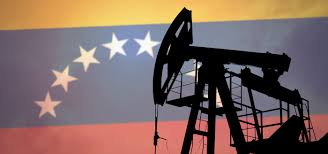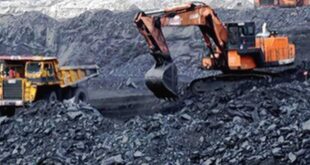In July. Venezuela’s oil production came in lower than PDVSA had targeted. according to Argus Media. While PDVSA had hoped that it. along with its joint venture partners. would produce as much as 1.65 million barrels per day (mb d) in July. actual production came in at about 1.526 mb d.
Argus says that production in the Orinoco heavy oil belt. where vast oil reserves are located. was a particular disappointment. The problem for Venezuela is that the Orinoco belt was supposed to hold up better than conventional oil production from elsewhere. The declines are a grave problem for the South American OPEC nation. and they pose an existential threat to the regime of President Nicolas Maduro. who avoided an apparent attemps days ago.
But the production figure that Argus got its hands on. which came from an internal report from PDVSA. seem optimistic. even though they do point to shortfalls. After all. the June OPEC report suggested that output stood at just 1.34 mb d – data that came from secondary sources. which includes Argus.
Against that backdrop. the 1.526 mb d figure doesn’t seem credible. Indeed. sources from within PDVSA told Argus that officials from the company’s eastern and western divisions “systematically inflated“ the data. “They play with the storage tanks and what they report is not reality.“ a senior executive told Argus. In reality. production could have been as low as 1.25 mb d.
The report is not entirely useless. however. as it does offer some clues into the company’s demise. Argus says that “scant maintenance. reservoir management. skilled labor flight and a lack of critical naptha and light crude for transport and blending“ are all contributing to the steep decline in production. An estimated 1.191 wells stopped producing in July.
In a separate report from Argus. it appears that the island of Curacao is “scrambling for a lifeline to resuscitate“ the century-old Isla refinery that PDVSA “has nearly abandoned.“ due to the fact that ConocoPhillips moved in to seize the facility following an international arbitration decision earlier this year. Curacao says it has the capability to operate the refinery on its own. but it doesn’t have the capital nor the supply of crude oil needed as a feedstock. The refinery can theoretically produce up to 335.000 barrels per day (bpd). but in reality it can probably only produce two-thirds of that amount. For now. it is barely operational with PDVSA no longer supplying the refinery with crude oil.
From PDVSA’s standpoint. the loss of the refinery has only compounded the problems back in Venezuela since the facility was critical to blending and preparing oil for export.
The problems in Venezuela are so bad that even the Trump administration. no stranger to conflict. has decided that it does not want to kick the country while it is down. After having been on the verge of implementing sweeping sanctions – possibility targeted at Venezuela’s oil exports. or perhaps the export of diluent from the U.S. to Venezuela – the Trump administration has scrapped those plans.
In fact. the problems in Venezuela are so acute. that the attempted assassination of President Maduro barely moved the oil market. as the WSJ pointed out. That bears emphasis: There was an attempted coup in a country with the largest oil reserves in the world. a founding OPEC member and still a major oil producer. and the markets basically shrugged it off. And that is not because the oil market is oversupplied – there is a reasonable case to be made that the market could be short on supply at some point this year.
But Venezuela’s oil sector is in shambles. so oil traders are apparently already of the mind that it cannot possibly get any worse. A coup even leaves open the very remote possibility of a rebound. although. as Francisco Monaldi details. growing production by. say. 200.000 bpd per year would require a sustained effort. including investments of around $20 billion per year for a decade. Not to mention a radical change in the political context and a macroeconomic stabilization program. Needless to say. none of that appears to be in the cards anytime soon.
In any event. the coup did not succeed. so the losses are destined to continue. “The permanence of Maduro and his radical circle of collaborators is short-. medium- and long-term bullish for oil prices because the regime will fail to take the steps needed to turn production around.“ Raúl Gallegos. a political analysts at Control Risks. and author of Crude Nation. told the Wall Street Journal.
 Iran Energy News Oil, Gas, Petrochemical and Energy Field Specialized Channel
Iran Energy News Oil, Gas, Petrochemical and Energy Field Specialized Channel




